Hello, everyone. Welcome back to Part 2 of this week’s mailbag series. There’s still a final Part 3 remaining, which will come in the next few days.
Without further ado, grab some food and a drink and let’s get to the answers! And remember, all subscribers can comment, so feel free to discuss down below.
20.
I understand Russian tactics.
Slow attritional grind. Low casualty rate for them. Reduced risk from counteroffensives as defence is strong. Support from non west aligned countries. Establish new markets and insulate economy from the west.
The risks are growing. More weapons are entering the country. If planes enter (may or may not) then the next step are troops on the ground (maybe Polish or Romanian). Then increasing risks of destabilisation in Moldavia or other outlying regions.
Then as the USA grows more desperate they will start to blackmail friendly countries to Russia and that’s done economically either via access to swift, US dollar, access to us markets, threat to steal reserves or denial of loans via imf, world bank. EG Look at Turkey.
Considering pros v cons, would it not be best to finish this campaign as quickly as possible? Stop the risk on the bridge, the nuclear power plant, on Russia itself and the risk of world war 3.
Firstly, I’d take issue with the contention that “more weapons are entering the country”. From what I can see it’s in fact the opposite. They’re getting far fewer weapons now than at the peak last year. So that risk is not growing at all, in fact you can characterize that as a lessening risk, in Russia’s favor. There may—hypothetically—be another future time with a huge burst or surge of deliveries that’s equivalent to some of the peaks of the past, but so far it’s not looking like that’ll happen as there simply isn’t enough free stock in the West, and now they’re just in ‘scrounging’ mode.
With that said, the very fact that they’re running out of weapons could further support your thesis that it could make the West desperate. But yes, the whole economic blackmail assertion is something I’ve been saying for a while now, that once it gets to a certain critical point, the U.S. still has many ‘buttons to push’ on Russia’s ‘allies’ in order to get them to pressure Russia into certain compromises like an eventual Khasavyurt Accords-style armistice or things of that nature.
It’s true that viewed from this one lens you can say it may be best to speed up the campaign. But you entirely left out the other side of the equation, which is that things are ‘speeding up’ in the negative for the West and the U.S. as well. Economic devastation in Europe is happening at a record pace; Germany for instance is now dipping into the lowest manufacturing PMI since the 2008 crash and Covid era, as an example:
The U.S. is drowning in scandals—as we speak, big developments are happening with the Hunter/Biden situation which can lead to Joe’s impeachment. There are many other factors we can list to the West’s detriment rather than Russia’s which would allow us to conversely argue that for Russia to continue the pace of the campaign would result in increasingly negative consequences for the West.
In reality, we can argue who has the advantage here, and it may even be close, as both sides have pros and cons from the conflict prolonging.
Another thing to consider is that, just like how from the Western viewpoint they believe the Ukrainian conflict offers the unique ability to fight and degrade Russia without having to fight them directly, similarly from Russia’s viewpoint you can say that the conflict can be a big deterrent against the West’s future, much bigger war plans against Russia itself. Meaning, if Russia knows or senses that the West had planned to eventually provoke a large war against Russia, then the extension of the conflict could be viewed by Russian planners as a deterrence to this because the conflict is emptying the West’s stockpiles of weaponry in a way that’s far easier for Russia to destroy than it would be if it was the West themselves using the weaponry. i.e. it’s much easier for Russia to destroy all the Leopards, Bradleys, F-16s of the world when they’re in Ukrainian hands than if they were being used against Russia by Germany and the U.S. themselves.
Similarly, it’s best that Ukraine’s inaccurate downgraded artillery systems fire the West’s 155mm shells at Russia rather than the West’s own much more upgraded systems like M777A2s with the GDU computers on them which the U.S. itself uses, etc.
In short, Russia’s rationale might be: it’s best to destroy these weapons here in Ukraine so that the West has nothing with which to even ‘think about’ waging war against Russia in the future.
Ultimately, I myself wish the war can be ended sooner, so this isn’t an argument for my own sake. And there are reasons to believe that Russia may in fact be shifting to the same stance, as there are now rumors that Russia may conduct a huge new mobilization to put a big finish on the AFU, of which I’m going to write about in the next report this week.
21.
Thanks for your great reporting. I am wondering, considering how the US almost never backs down, but rather, always doubles down, what you think the US might have planned for further escalations that the morons in the administration (Blinken, Sullivan, Nuland, etc.) believe will either turn things around, or simply "hurt Russia more"? I assume they have more plans in the works, but I am at a bit of a loss to come up with anything that has not already been mentioned (like a small dirty bomb at the ZNP). What is your estimate of the new options they still have available, and do you think any of them will be attempted?
Firstly, I believe the ZNPP falseflag may still be in play in the future, and is their best wildcard. The only problem for why they can’t quite use it at the moment is because it was meant to be used under the narrative that Russia is ‘desperate’ because they’re getting chased out of Zaporozhye by the indomitable Ukrainian offensive. But the problem was, the offensive was blown out in such shocking and visible fashion, that they weren’t able to string together the appropriate narrative because even the gormless Western audience wasn’t dumb enough to believe that Russian forces would destroy the ZNPP while easily winning and beating back Ukraine’s offensive attempts.
Zelensky really needed a showy, palpable breakthrough in the Zaporozhye direction in order to sell the angle that ‘Putin is desperate’ and retreating. However, if they get truly desperate with no other way out, they could just attempt to take the plant across the reservoir, which was meant to be ideal for August anyway, as reportedly that’s the hottest month when the reservoir will be at its most dried out and traversable. Then, the falseflag could still be in play because they can just blow up the plant with strikes and claim that Russia ‘blew it up while retreating’ after Ukraine was close to seizing it, etc.
You’re right though, I agree that they typically double down but apart from the ZNPP falseflag I don’t see too many other wildcard alternatives that they can pull that would give them a Gulf of Tonkin-esque moment. My prediction is that it can go one of two ways:
1. The first is that once they know all is lost, they will simply put huge economic pressure on all of Russia’s allies to try to freeze the conflict in a Khasavyurt / Korea-DMZ style armistice. This will include all kinds of economic terrorism, bullying, threats, coercions, bribes, on Russia’s closest allies and Russia itself. There are still strings left to be pulled and ‘sanctions’ left to be escalated against Russia, on sensitive industries and targeted sectors which haven’t yet been sanctioned.
2. Failing the above, the only thing left for them to do will be to try and salvage as much of west Ukraine as possible, particularly Odessa. So they will try some kind of falseflag or provocation that can get troops to occupy some key western Ukraine areas. Of course, this takes us back to earlier, where they have no wildcard left to play apart from the ZNPP. However, one area where they could perhaps take advantage is vis a vis the growing Poland/Belarus situation. If they can perhaps somehow stage some falseflag painting Belarus as an aggressor against Poland, they could maybe try to spin that into some kind of Article 5-lite scenario that would give them pretext to at least secure the west and Odessa.
However, usually such actions are heavily ‘telegraphed’ in that they begin to build a slow concerted narrative over the media, telling us exactly what they plan to do. For instance, months in advance they may begin saying how Lukashenko is acting ‘much more aggressively’ and is getting ready to bomb Poland or do such and such action. So far, we haven’t seen any conditioning of the masses of this sort, at least not to a major extent, so this option remains low confidence and maybe a last resort still further out in the future.
Apart from those, I don’t see much other option for the U.S., which means they may be forced to put all their effort into freezing the conflict out of desperation. There are even new indications of this, such as famed Ukrainian propagandist Dmitry Gordon stating that his sources tell him what U.S. interlocutors are really saying ‘off the record’. And that is, the West has given a secret ultimatum to Ukraine: you have until the end of this year to take as much territory as possible, then the rest will be settled via ‘negotiations’, i.e. ceasefire.
22.
First, thank for your excellent reporting. Now, quick question and a brief comment.
Question: What, if anything, do we know about US funded bio labs in Ukraine?
Comment: This story has simply disappeared from the MSM. However, the recent ‘smoking gun’ revelations by Matt Taibbi and Michael Schellenberger about the gain-of-function research at the US funded Wuhan Virology Institute indicating the strong likelihood that Covid 19 was created and leaked from that lab should prompt everyone to question just what the hell have we been doing in these labs in a country like the corrupt and Nazi-infested Ukraine.
Russian General Igor Kirillov, who is the head of the ‘Radiation, Chemical and Biological Protection Troops of the Armed Forces of the Russian Federation’ continues to make updates via military presentations on this matter.
Here’s an older example:
And here’s a more recent briefing:
In fact, his department has just published two recent batches of materials, in June and one just recently a week or two ago, which has a lot of updates and info you can read through here:
https://telegra.ph/Russian-Defence-Ministry-briefing-on-US-military-and-biological-activity-06-19
and:
It includes information and slides like the following, which shows people uncovered to be involved with secret Ukrainian military-biological partnerships with the U.S. military:
I haven’t had a chance to read through all the materials myself, but if you’re interested you can do so to get up to date, and continue to be on the look out for more releases and briefings from Kirillov as he holds them frequently on this matter, which shows that the Russian military is very closely monitoring and tracking all the developments in this sphere.
23.
It is interesting that the geopolitical end game will end up depending whose economy collapses first. The Western economies seemed to slow, even fall apart with high inflation early in the war, and then seemed to rally back and the stock market is at new highs and the treasuries are still low(er than inflation), although the spread between mortgages and the ten year is rather high. Office vacancies are up, but that is someone else's problem. Russ has the ammo, but the West has the payola. How do you see the economic/ BRICS/SCO war going? How does Russ win this war?
The stock market is fairly meaningless when it comes to the real economy of the plebs as it’s removed from any connection to the average citizen. Only a small percentage of American citizens, for instance, hold stocks, and that’s by way of things like IRA and retirement portfolios at their jobs—i.e. things which are not actively paying out dividends that they can use on a daily basis, but rather are more akin to investments for their retirement. A tiny almost negligible percentage of people actually actively make some kind of money from ‘stocks’. As such, it remains a sort of self-enclosed system whose ups and downs are disconnected from real society.
Either way, all of that is irrelevant to the war anyway. What matters is manufacturing capabilities—and despite paying constant lip service to this account, few companies in the West are actually willing to take the giant financial risks necessary to appreciably increase their production. It takes billions of dollars to purchase the new machines/infrastructure/hardware and/or factories, train the workers, etc. to substantively increase production for something whose demand may dry up completely in only a few months. The big wigs at these companies aren’t totally stupid, they know the war could likely end soon and Ukraine has no chance of winning, so they’re hesitant to spend historic levels of money on demand that will prove highly ephemeral.
So the war is not about ‘economies’ in general but the specific production lines capable of creating the types of materiel that wins wars. The entire U.S. has only one shell factory that produces 155mm. One. Yes, it’s broken up into 4-5 factories that each produce a different part then assemble them together, but it’s effectively one production line. The same goes for explosives.
But I believe you asked about the wider economic war between the two blocs. You said the West has the payola, but that payola is denominated in dollar fiat which is at risk of being etched away. I know we can argue both sides, as raw data actually shows the dollar is at its strongest globally than it’s ever been, to some extents. However, there are so many tidal forces beginning to develop that this could change fast.
Firstly, it must be remembered that the BRICS, with only 5 nations, are already more powerful than the G7 powerhouse in GDP-PPP. And yet there are over 40 nations reportedly in line to join the BRICS. Now, they’re more and more seriously discussing the creation of a gold-backed currency for the BRICS to settle their trade with amongst themselves.
Imagine a scenario a little down the line, where BRICS has expanded to a potential dozens of nations, all dumping the fiat dollar and using their own new standard. Now, further imagine that Saudi Arabia joins this initiative, which is not out of the realm of possibility given that they’ve literally expressed such interest in recent times:
Recall that the entire global dollar hegemony known as the privilège exorbitant is based on the petrodollar.
Now, further imagine a convergence of these potential events all happening within a relatively short window. The death of petrodollar, the meteoric growth of BRICS to dozens of nations, and their mutual acceptance of a new gold-backed standard. Such things could topple the world order very quickly.
Sure, it won’t necessarily “kill the dollar” entirely, at least not overnight. But the point is not to completely destroy the dollar but rather give even a semblance of an alternative which can compete. The way that Western economies are structured is that the dollar needs to remain supreme, even a moderate hit to its liquidity and convertibility can completely upend Western markets, economies, and foundations in general.
Also, there are a number of other sudden tectonic events that could happen. For instance, low probability as it may be:
Not to mention the fact that the West loves to claim every other country experiences a ‘brain drain’ of emigrants when in reality it seems to be going the other way now:
Of course, some argue that all the BRICS-related talk is just wishful thinking, and much of what I outlined above has very little chance of actually transpiring, at least in our lifetimes. That could be true, but the clouds are gathering and I think the world is ripe for major changes. It may not end up as ‘drastic’ as some of the above projections, but the thing is—the ‘East’ doesn’t need “drastic” to win. They’re already swamping the West and completely taking the lead in every sphere even with the Dollar’s absolute dominance. Imagine how much farther they’ll go if there’s even a moderate re-balancing? Another way of putting it is, they’re winning at a game by playing it completely by the opponent’s set of rules, so when even some of those rules are changed in their favor, it won’t even be a close contest at that point.
Also, we must recall that the East controls or will control all the most important resources of the world in the near future. As we know Russia and China are heavily moving into Africa, making all the favorable deals while the U.S., France, and West in general continues to be booted out. For instance, just from a couple weeks ago:
As we speak, Russia is hosting one of the largest gathering of African nations—40 total are in St. Petersburg for the Russia-Africa summit, where many new initiatives and deals will be discussed and/or signed.
The future indeed will be one of ‘blocs’, the U.S. is ensuring that will happen. However, the bloc that the East will control will have by far most of the world’s resources, while the West will be left holding their now-worthless fiat ‘payola’.
24.
What is your take on BAP's recent article on Russia?
https://mansworldmag.online/know-your-enemy/
I am not sure the concepts of "right" and "left" have any meaning at this point; however, there seems to be a disconnect between the established "right" in much of the west and their constituencies, as well as Russia's perception of the west's internal factions.
As a followup to the below, this piece from RWA's Substack echos the other article.
I’d say that article is pretty spot on. It actually adheres pretty closely to Guillaume Faye’s theories. He’s the founder of the ‘archeofuturism’ movement, which was the precursor to a lot of the modern nRX, BAP, and other ‘rightwing’ movements of that sort. He was a French theorist who basically saw that Europe was vassaled to the U.S. and therefore promoted the idea of Europe splitting with the U.S. and instead uniting with Russia, even literally so into one unified state he called ‘EuroSiberia’ or something like that. But the underlying idea is that the West is heading to a decadent collapse.
The BAP article correctly points out that Western citizens are much better served by aligning with Russia than anything their own governments support. The problem is, many decades of Cold War indoctrination has ingrained in Westerners the idea that anything that comes out of Russia is some type of subversive poison with the stench of the “evil Bolsheviks” and the big bad dreaded C word which has haunted Western civilization for over a hundred years now.
This is exacerbated by the fact that the last group of people in the West which remains free of the mind control is typically the ‘salt of the earth’ rural types, which haven’t succumbed to the cosmopolitan Democrat city influence, at least using America specifically as an example. But the problem is, these very people—as I think the BAP article implies—are the ones most likely to be naturally averse to the type of image that Russia is presented with by the propagandizing MSM.
In the U.S., the rural and conservative types are the ones most likely to descend from the spirit of the wild west, frontiersmanship, independence and self-reliance—the complete opposite of the dirigisme-style governance represented by the bogeyman specter of Russia with its ‘Soviet legacy’, at least as presented by Western politicians and media.
So my point is that, a certain image of Russia is so ingrained in the people of America’s heartland, that it would seem to me to be very difficult to disabuse them of it and make them see the actual truth of the situation. Sure, the enlightened ones who did the extra legwork like BAP himself have broken through the programming, but I’m not sure how many others of the ‘heartland’ can do so without severe effort. Most Americans of all stripes are so programmed by those decades of the Cold War that all you have to do is utter a few key words like ‘Gulag’, ‘Oligarch’, or the big scary ‘C word’ and they’re ready to take up arms for Ukraine.
It’s a classic case of emotional and psychic manipulation. The media is very good at it. They know which emotional chords to strike, and know how self-righteous but also selfless Americans can be, and thus how easy it is to manipulate them into supporting a perceived David vs. Goliath cause. Ukrainians are portrayed as ‘freedom loving’ people just at the brink of nearly being Americans themselves. While Russians are dehumanized as non-human ‘Orcs’ from a cold and unforgiving place full of gulags, oligarchs, and that dreaded unspeakable C word. Ukraine is about progress while Russia is about barbarism and ‘might means right’. And Americans love a good black and white moralizing story with a clear-cut good guy and easy to hate villain. Just look at Zelensky, young and hale, likable with his Hollywood smile while Putin is depicted as a stone-cold mafia boss intent on taking people’s freedums by force.
My point is that, it will be an uphill battle to undo the programming in Western audiences. The best example of this is to look at the shocking level of cognitive dissonance at play in the Western pro-Ukraine supporters who are forced to deploy the wildest mental contortions to reconcile the various inconsistencies inherent in their support; things like the obvious Nazi stench in Ukraine; the obvious cover-ups of known Ukrainian atrocities, particularly from fanatical nationalist groups like Azov, Tornado, Kraken, etc. This includes well known massacres from the Odessa tradehouse to the Lugansk bombing by a Ukrainian fighter jet in 2014—events whose responsibility is accepted as being Ukrainian even by Western MSM. Not to mention the daily mass slaughter of civilians in Donbass which are widely circulated on video throughout social networks. Western supporters of Ukraine see these but dismiss them with a type of directed blindness that borders on clinical psychosis. These people simply hate Russia so much they are willing to accept any atrocity. It’s akin to the famous post by some rabidly Republican-hating Democrat who said they didn’t care if tapes of Hunter Biden eating children were discovered, they still would support the Biden administration. This type of fanatical zealotry is cult-like and goes beyond the pale of mere ‘logic’ which can be explained rationally to someone in order to change their mind or make them see the light.
It extends to twinks like Paul Massaro who exemplify clear mental illness in their unhinged, singularly blinkered hatred:
To people like that, no amount of wrong can be done by Ukraine to change their predetermined programming. All atrocities are merely rationalized away with an increasingly labyrinthine cognitive dissonance.
In support, just take a census of all the American mercenaries which have gone to Ukraine thus far. Just off the top of my head, the majority of them appeared to be from the South, rural areas in particular, with others I recall being from the Midwest as well.
That’s not to say an effort shouldn’t be made to convince these people, as BAP is doing. I still applaud the effort and think it should increase. But it’s merely my own personal take on the hopelessness of the situation. I’m not sure that an entire age of indoctrination can be undone; there are simply too many structural and systemic things in place which work against any enlightenment or revelation of truth in this direction.
But I do think people are beginning to open their minds and see the truth, to some extent at least. I see an increasing amount of Americans who support Russia and Putin, so like I said it’s a worthwhile effort, even if it doesn’t yield the total turnover like some may expect. Just look at yesterday’s destruction of Piers Morgan by young American commentator Jackson Hinkle, who represents a new brand and new generation of non-brainwashed millennials/zillennials:
With a budding generation like that, I suppose there’s some hope, after all.
25.
Dear Simplicius!
Your thoughts on the possibility of Poles and Baltic - “miniature schnauzers, leopards”, what have you - entering the war theatre and how it will affect, Russia’s campaign strategy, which is rather modest than aggressive, driven by an attritional goal?
The cancelation of the grain deal, followed by the destruction of the ports, to me, is a display of a long-awaited, “enough is enough” from Russian leadership, which may, or may not be a factor in the decision of a “pets” entering the war.
Thank you!
I know this question was written prior to my latest article here, but I think that article answers most of the question so it would be pointless to re-paste everything here. So, please read the section of that article on Lukashenko-Putin’s new press conference and all the insinuations of that.
But one thing I forgot to add in the above article is the following perspective. A while back, I had opined that Russia wouldn’t really mind or care if Poland were to take western Ukraine—in fact, Russia may prefer this. After all, wouldn’t it make Russia’s job easier?
If Russia were to take all of the Donbass and everything east of the Dnieper which would leave a Ukrainian ‘rump state’, Russia may be forced to then march its army all through the giant lands west of the Dnieper, chasing the AFU further and further west. But if Poland were to take the west, then it would leave much less territory for Russia to have to wade through in order to completely demilitarize the AFU and force its surrender. At least that was my thinking at one point.
But the key thing I didn’t consider in all this calculus was Belarus’s perspective. I calculated it only between the perspectives of Russia, Ukraine, and Poland, and never considered that Belarus may have a strategic national security interest in not wanting Poland directly beneath them on the southern border in such a way.
Also, another thing I should state is that I’ve often talked about how one of the next flashpoints which the West could utilize to destabilize Russia and keep the war prolonged is playing more games with Kaliningrad, as they did last year when they ordered Lithuania to suddenly halt Russian railway supplies as codified in the 1991 treaty, which pass through Lithuania to supply Kaliningrad.
Much of the current talk about Wagner being placed at the Suwalki Gap revolves around it being ‘offensive’ in nature. Particularly, in Western/pro-Ukrainian circles they believe Wagner’s intention is to seize the gap and that Russia intends to attack first. However, I believe the other stronger possibility is that Russia in fact foresees the renewal of these games in the future, particularly once the AFU is close to collapse/surrender, in order to try and ‘stretch’ Russia. So by placing Wagner there and giving the whiff of a threatening posture, Russia is in fact creating a deterrent to keep the West from even ‘thinking about’ renewing the Kaliningrad blockade plans.
Lastly, I’ll mention a couple other things. Finland’s accession into NATO is also a well-planned out cog in future provocations. The intention, which I once outlined long ago, is to create blockades in the future between Finland and Estonia in order to hamper Russia in the Baltic Sea.
As Southfront reported earlier this year:
With the collapse of the Soviet Union in 1991, a dividing line in the middle of the Gulf of Finland was agreed upon between Russia and newly independent Estonia. From this middle line, Finland and Estonia retreated three kilometres to allow Russia a six-kilometre channel for the free passage of Russian merchant and military fleets, thus actually making these international waters. In order to blockade Russia in the Gulf of Finland, it is necessary for Finland to implement the same policy. If Tallin unilaterally introduces such a zone in its territorial waters, then Russia has the option to use the Finnish part of the gulf.
The plan at the time was for Estonia to widen its economic exclusion zone from its coast, but Finland, not being part of NATO likely backed down from joining the plan. Now part of NATO, Finland can perhaps rejoin the plan in the future. If both were to ‘expand’ their zones, it would create no room in the middle of the channel for Russia to legally pass, further putting pressure on blockading Kaliningrad by sea.
In a recent report I had also mentioned MK Bhadrakumar’s recent article which revealed that a top German military leader/defense expert had stated that “Nato should consider to “cut off Kaliningrad from the Russian supply lines. We see how Putin reacts when he is under pressure.”
So, in the future I do see continued provocations of this kind, particularly now that Finland and presumably soon Sweden, are in NATO, which will make things easier.
But you’re also right on the fact that Russia’s latest escalation is likely meant to be a message to deter future attempts from Poland. By striking that closely to NATO’s border on the Danube, Russia is clearly showing that they’re not afraid to hit whatever needs to be hit—and this is only a day before Russia again damaged a new American MQ-9 Reaper in Syria by hitting its propeller with flares.
Much of Russia’s recent actions have been all about deterring the future potential incursions by Poland/NATO/Baltics, like the things I mentioned in my recent article, most notably being placing nukes in Belarus, as well as the rabid pitbull of Wagner on their doorstep. I think Russia will continue such deterrent ‘statements’ and it could have a strong chance of keeping Poland and co. at bay from ‘trying their luck’.
26.
Isn't the failure of the Russian government to clarify the Prigozhin incident not indicative of an extremely serious malfunctioning government?
This is a complex question for a variety of reasons. One reason is the following: can you name me a single government on earth that currently would not be considered a “seriously malfunctioning government?” This is not rhetorical, but an actual serious question. Would all the Western governments of Europe, America, etc., with their wildly flagrant and frequent scandals be considered as ‘well-functioning’?
This is not to make an excuse for the Russian government, but simply to give a bit of contextualizing reality to understand the full breadth of the question and its inherent answer. The ultimate point is that, all things are relative. If the Russian government can be considered malfunctioning, then I ask: compared to whom? It certainly is far better functioning than the government in the U.S., and the Wagner scandal and its perceived malfeasances are certainly light-years ahead in moral principle than the various scandals plaguing the U.S. government on a daily basis. After all, your gripe is presumably that a wrongdoer wasn’t properly punished by Russia; this is a passé thing in the U.S.
With that said, I’m not absolving the Russian government from this incident, nor making an excuse for them, for I myself am a little puzzled at the hypocrisy inherent in not punishing Prigozhin. However, I simply accept that during war time, there are certain allowances that are unfortunately needed to be made that perhaps wouldn’t pass at peace time.
I also fully acknowledge that Prigozhin may very well have the Russian government “by the balls”. This is simple reality. What I mean by that is, there is a simple logic to follow:
1. Prigozhin controls an extremely successful unit which Russia needs
2. This unit has loyalty to Prigozhin
3. Arresting Prigozhin would create havoc and possible mutiny in this unit against the Russian government
What would you do in that case, if you were the Russian gov’t?
Furthermore, I had already outlined in one of my big write-ups directly after the ‘rebellion’, that the incident is further complicated by various unknowns. For instance, when we speak about punishing Prigozhin, presumably one of the main transgressions we’re talking about is shooting down the Russian aviation and killing pilots. However as I outlined before, those very pilots may have been sent by illegal orders not approved by the higher Russian MOD. So, if you’re the Kremlin, how can you punish Prigozhin for defending his troops when they were being attacked by potentially un-approved orders from the generals in Rostov? We don’t know for a fact this was the case, it’s simply one of the theories, partly supported by the fact that we have reports that the Ka-52 pilots which attacked the Wagner column were in fact lied to and told by their commanders that it was the ‘AFU’ which had breached into Rostov and must be stopped.
So the fact is, it was a much more complicated situation, which is even further complicated by the fact that Prigozhin’s troops may have further been illegally struck by a rogue general’s attack on the night prior. The claimed attack which Prigozhin filmed may have been fake, as I myself mostly assumed, but we don’t know for sure. If the attack was real, that means a series of transgressions from both sides actually precipitated the armed take over of Rostov. This means that you can’t really blame Prigozhin as much if a rogue general was literally shelling his troops with a missile attack.
If that’s the case, were the rogue generals punished? We don’t know—much of everything that went on was secret and behind the scenes, including Prigozhin’s own deal terms. But we do know for a fact Russian forces literally attacked Wagner before in Bakhmut, the Russian 72nd brigade commander literally admitted it on film.
So if you’re Putin, sitting there as judge and jury, do you punish Prigozhin for what he did after realizing that Prigozhin’s own troops were continuously attacked by Russian forces? In that case, Putin may have just decided: “Okay, I’m just going to separate you two and this time won’t punish either side, because you’re both at fault.” That’s along the lines of what a rational father would do to his two fighting children.
With that said, for all the worry-warts or even concern trolls (not saying you’re one, but there are many on the net), who attack Russia over its perceived failings, I have a treat for you. Here’s a Russian survey from days after the rebellion, asking nearly 2,000 respondents how they feel about the resolution of the ‘Prigozhin saga’:
The vast majority of Russians were happy with how it concluded. So, is the Russian government gravely malfunctioning—maybe. Are Russian people happy with how their government works? Apparently, overwhelmingly so.
The only last thing is, given what I described about the Russian military above, what with the inter-faction warfare and illicit commands, etc., your natural next question would probably be: “Well, if the Russian gov’t isn’t ‘malfunctioning’, then can’t we characterize the Russian military as being severely ‘malfunctioning’, given the above?”
And to that, I would answer: yes. It’s true, the Russian military is very dysfunctional in many ways. Most militaries are. However, the Russian one is probably even more dysfunctional than most, for a variety of reasons. One of which, of course, is the stagnation that ate the military from within following the catastrophic post-Soviet years. Many of the lower echelon commanders who were weened on the corruption in the 90s, became the ‘generals’ of the 2000s who were now used to doing things a certain way.
But to see the Russian military only as dysfunctional is to suffer from the age old mental deficiency summed up in the famous quote:
The truest sign of intelligence is the ability to entertain two contradictory ideas simultaneously.
The fact is, the Russian military suffers many dysfunctions, and yet it’s also arguably the most powerful in the world. A couple decades of dysfunction can erode some things, but they won’t completely efface a hundred plus years of legendary military doctrine embedded in the very foundations of the academies, etc.
So, at risk of sounding cheeky, I’ll put the final stamp on the question in the following way: is the Russian military dysfunctional? Yes. Would it still kick NATO’s ass? You bet.
Because at the end of the day, I’d take a bunch of quarreling real Generals over whatever the hell it is that NATO has:
27.
Hi Simplicius, what do you think Wagners are up to in Belarus? There are a lot of rumors swirling around.
Most of this was already answered in previous questions here, insofar as the Suwalki Corridor stuff.
However, I’ll just add that it’s still not 100% certain what their true purpose there is, and there’s still a chance for some trickery, i.e. the possibility of Wagner opening another front on Ukraine from the north.
Recall that Russian chairman of defense Kartapolov is the one who made the Suwalki Gap revelation on national television. Furthermore, here’s a recent update on Wagner’s camp in Belarus:
There are at least 750 pieces of equipment in the Wagner camp in Belarus - satellite image from July 25 published by Radio Liberty. At least 754 pieces of equipment are visible on the territory of the camp. If there is heavy military equipment among them, then its quantity is minimal. In particular, there may be armored vehicles.
As you can see, a giant amount of equipment has reportedly moved in just in the past couple weeks alone, but most of it appears to be logistical things rather than heavy war-fighting equipment.
Ultimately, it appears quite strange and inefficient to have a massive camp of itinerant fighters just lodging in the middle of no where for extended periods of time, so it would logically seem to make more sense that they’re intended to be used in some way in the near future. Prigozhin did still maintain that Wagner will be back in combat by August 5th, but there’s been no update to that.
Only other thing I can think of for now is the following: the Russian offensive in Kharkov has particularly picked up the last few days and is now steaming ahead with surprising speed. If Russia manages to get completely to the Oskil River sometime soon, then perhaps Wagner can be activated from the north. The only thing that doesn’t make sense about that is Wagner is supposedly banned from Russian soil, at least as a militarized unit. And Belarus is north of Kiev and Chernigov area, no where really close to Kharkov, which is directly below Belgorod region. Thus, for Wagner to hit Kharkov they’d have to be coming from Russia not Belarus.
It’s possible perhaps that they’d be used as a fixing/pinning force in Chernigov/Sumy, though this is less likely. With that said, Ukraine has been doing a lot of strange ‘preparations’ in the Sumy area in the past month, some reports claiming they’ve even been evacuating people from their homes in the villages near the border in order to set up some kind of defensive positions, as if they’re anticipating something.
But we can’t tell for definite for the time being as Russia is playing the cards very close to its chest when it comes to Wagner. We’ll have to await new clues and updates.
28.
These are two similar background related or personal questions that I’ll tie together:
How many hours a day do you sleep? How many hours do you write in the day? Thanks, lighthearted question.
Believe it or not I sleep a regular amount of hours 😀, nothing out of the ordinary. Some people are surprised by my perceived level of ‘output’ but when I had announced that I was going to be doing this ‘full-time’ I explained that I would be treating it like a regular, serious full-time job. And so that’s what I do, putting in the same type of man-hours each day that a normal working person or even self-employed entrepreneur can be expected to put in for their chosen calling.
I think some people are only surprised due to the fact that most analysts in this field are part-time, which is no knock on them as no one should be expected to do this full-time, plus I think it just so happens by virtue of how people become analysts to begin with. Most of them are older, retired or semi-retired folk, and so they don’t really care to make a ‘second career’ out of this, but are simply using all the experience gained over the course of their lifetime to enlighten people and maybe make some extra coin on the side. It also usually has to do with the fact that to be an effective analyst, you typically have to be older. Most of the top guys like Saker, Bernhard, Martyanov, Johnson, etc., are those who’ve spent their careers/lifetimes accumulating info and becoming knowledgeable enough to speak on geopolitical topics with authority.
With all that said, the writing itself probably takes the least amount of time. It’s all the researching and actual reading of information that represents the king’s share of the time; as well as collating and sorting it, filing things away for future use, and administrative things of that nature.
Hi Simplicius, I’m a new paid subscriber and this is my first post. My question is kindly give us your background and who are you and how long you been doing this independent journalism? Lastly my humble thanks to your excellent quality work
Thanks for becoming a subscriber. For now, I continue to prefer anonymity so I don’t like to share too much information about myself. However, you can get a little basic gist of my background which I wrote up in the first ‘question #1’ of this inaugural mailbag:
Eventually, in the future I’ll likely reveal more and more, but for now anonymity remains a welcome convenience.
29.
Please confirm or debunk this vid purportedly showing Russian MP's killing civilians.
I can’t definitively confirm or debunk it as I don’t have enough information on what’s happening due to not enough context being provided.
But, some things off the top of my head. The video is obviously highly edited with it being difficult to see how many of the shots actually line up, if at all. For instance, it continues to cut to close ups of cars on the road that don’t even appear to be from the same scene. The captions on the screen say things like “man and woman were killed” yet there is no proof of that whatsoever.
Why is it that when Ukrainians kill civilians, there is clear proof? Like this, or this but when Russia allegedly does it, there’s not a single body shown and the video is a highly edited, seemingly manipulated affair?
The one shot up car it actually shows up close is mysteriously empty, why is that?
And the one and only actual occupant they show from any of the cars, appears to be a military man with a beret running away from the car:
Presumably, this is from the opening of the war. In those first few days, it was known that one of the objectives of Russian troops was to surround a lot of Ukrainian military centers, academies, police HQs, etc., and since Ukraine hadn’t yet mobilized their troops en masse and were blindsided by the ‘surprise attack’, most of them were not yet in their units, in terms of being uniformed, in military vehicles and formations, etc.
Thus, in the first few days, there were many scenes where Russian troops actually engaged Ukrainian military assets which were in civilian vehicles that were heading toward or away their military stations after being ‘called up’ for emergency service.
What points toward this direction in the above video is the fact that the ‘Russian troops’ are taking cover and appear to be in very tensely defensive positions, which means they are expecting something rather than calmly patrolling a checkpoint or something to that effect. Plus, according to the caption they’re not even Russian army but are OMON, which would make even more sense in perimeter security.
Ultimately, I can’t give a definitive answer on the video. Maybe it could be portraying actual crimes, for which the soldiers should be punished. After all, that type of scenario is quite common in war. Just take a look at what U.S. Marines did to civilians at similar ‘checkpoints’ in the Iraq War:
As well as:
Recall that it’s actually the AFU that has been proven numerous times to dress up in Russian uniforms and commit various provocations, fakes, and massacres in order to blame Russia. For instance, the infamous Tornado Battalion members famously dressed as Russian troops then raped a bunch of Ukrainian children in order to make the civilians think it was Russian troops rampaging through their village:
A Ukrainian lawmaker said Saturday that cell phones seized from commanders of an ultra-nationalist government unit, known as the Tornado battalion, serving in Eastern Ukraine against anti-government rebels, contain graphic images of child sexual abuse.
“When the Tornado commanders were detained, their mobile phones were seized. There was some scary footage on those phones … footage of sex orgies and rape,” Tetiana Chornovol told Ukrainian broadcaster 112.
“There were also rapes of underage girls,” she said, adding that “there were even babies. As I understand the baby's mother was forced to do this under the threat of death of her child.”
More recently, I reported a month or two ago about how Ukrainian troops were caught dressing in Russian troop uniforms in the Belgorod region when they were committing their rampage and acts of sabotage. And this was done so many times that I can post articles all day long about each instance:
Thus, it’s very difficult to believe anything released by a lying regime credited with so many provable propaganda provocations, particularly of the type where they dress as Russian troops.
Could there be a chance that this video depicts Russian OMON security forces actually killing civilians? Could be.
Could there be another chance—arguably bigger—that the highly edited and manipulated video, which doesn’t show a single body, and whose only depicted victim appears to be a military aged man in a special forces uniform, is simply Ukrainian propaganda? I’d say so.
30.
Though some skepticism is starting to find its way to the surface, they keep bringing up the F-16s. You've already described how these single-engine vacuum cleaners won't be using country roads for airstrips and the Russians are unlikely to allow a NATO standard airbase to be maintained anywhere in Ukraine. Is there any scenario where Ukrainian pilots and ground support could use F-16s against the Russians in the east or is this just another attempt to get NATO more fully engaged in the fighting?
Many people don’t know that some Russian planes have special features like louvered intakes that allow them to take off on extra rugged runways without getting debris in their engines.
Mig-29:
The F-16 has that giant scoop intake on the bottom that is likely a magnet for debris from rough or ad hoc airfields.
There is a bit of a conundrum with operating NATO craft in Ukraine. You can take off from very distant airfields in the far west of Ukraine which may be more shielded against Russian strikes, in the sense that Russia may ignore them or, if they did choose to strike them with missiles, the planes can be easily scrambled out of harm’s way with advance warning.
But the trade off is the fact that Ukraine is a giant country, and flying from its farthest western point is not feasible because most combat aircraft don’t even have the base range to operate that far.
Here’s an example:
Note the distance from western Ukraine to Donbass: over 1,000 kilometers.
Now note the F-16’s range:
It’s a mere 500km+ with actual armaments attached. If it dumps all the armaments and takes on a huge amount of drop tanks, then it can go much farther.
But remember, the 1000km distance from west Ukraine to Donbass is actually 2000km you have to travel, because you have to get to the target then back to your home runway—1000km one way, then 1000km the other.
So, the trade off is, these planes have to operate from fairly close. If 500km is the F-16’s combat range with actual armaments, then remember, this means it can really only go 250km one way toward the target, as it needs the remainder of its fuel to get back home.
Here’s an example of what 250km looks like from Donbass:
It doesn’t get you very far at all. Now, keep in mind, there’s ways to fudge this slightly. For instance: if the F-16 is being used for a long range missile deployment missile, like shooting a Storm Shadow which itself has a 500km+ range, then that adds hundreds of kilometers to the F-16, as it doesn’t need to get that close to the target. Secondly, maybe they can rig something up to put some drop tanks on it but still allow it to carry a couple missiles, but extend its range a decent degree—I’m not 100% sure on that.
But recall, one of their actual stated purposes for getting the F-16 is to use it as an air-to-air platform to ‘take back the skies’, so to speak, from Russian air superiority fighters like Su-35s. That means the F-16 would in fact have to get fairly close to the frontline, which takes us back to the original point.
The problem appears untenable, and since air refueling is out of the question, to me, it doesn’t seem a realistic prospect to successfully use the F-16s at all. Keep in mind, platforms like the F-15 can have far more range than the F-16, so that would actually work from western Ukraine, but the F-15 is not in talks at all.
One clue came today, when new Russian strikes reportedly just targeted an airbase in Zhitomir which is said to house the Su-24Ms which have been firing the Storm Shadow missiles recently:
🇷🇺💥🇺🇦 Following the military airfield in Zhitomir, an airbase in Starokostiantyniv, Khmelnitsky Oblast, has been targeted and hit.
Frontline bombers Su-24M, which were launching Storm Shadow cruise missile strikes earlier this week, were based there.
The airplanes and ammunition stored in hangars have been destroyed. Secondary explosions are heard.
Vladimir Rogov
The Su-24 is listed as having a ~650km combat range, a bit more than the F-16.
The above shows 350km from the airfield in Zhitomir—this is arguably how far the Su-24M would be able to go before needing to turn back home with the remainder of its fuel. From that end point to, let’s say, Berdiansk is ~420km; to Crimea is ~350km. These are well within the Storm Shadow’s reported 550km+ range.
Thus, even though the F-16’s range is a little worse, it could feasibly operate from that same airfield in Zhitomir which was hit today. The airfield is not quite at the absolute western end of Ukraine, but it’s just at the sweet spot that allows:
a long advance warning of incoming missile strikes to scramble the jets out of harm’s way
just enough distance for the plane to reach a firing point for the Storm Shadows
However, for missions of patrolling the skies or trying to shoot down Russian jets, that base may be too far, which means ultimately the F-16s can’t really add too much to Ukraine’s arsenal besides just a few more airframes to lob cruise missiles which by that time may be totally neutralized by updated Russian AD anyway.
Lastly, please scroll down to question #22 in this mailbag segment:
I did a much more detailed overview on this topic, including a whole report on Ukraine’s system of taking off from highways with footage and photos. One I’ll re-post is the following from Rybar’s report on the subject:
Read the full report in the link to see the exact coordinates and operating procedures for Ukraine’s ad hoc highway-runways, and how they’ve managed to elude Russian defenses by hiding their jets.
Lastly, allow me to mention one last thing. There’s been some talk made about the fact that the F-16s Ukraine would get would be the F-16D variant which comes with one of the latest and most powerful AN/APG-68 AESA radars, and this would allow the F-16 to outrange/outdetect and kill the Su-35.
Such people have no clue about radars. While not full AESA, the Su-35’s PESA radar, the Irbis-E, is legendary, and is arguably the most powerful radar in the world in pure peak power-aperture at 20 kilowatts. AESA can give you a few more tricks, like certain jamming resistance abilities, etc. But nothing can beat pure power generation, which allows you to detect objects at the farthest possible range. Which is why the F-16’s max detection range is under 300km while the Irbis-E of the Su-35 is 400km+.
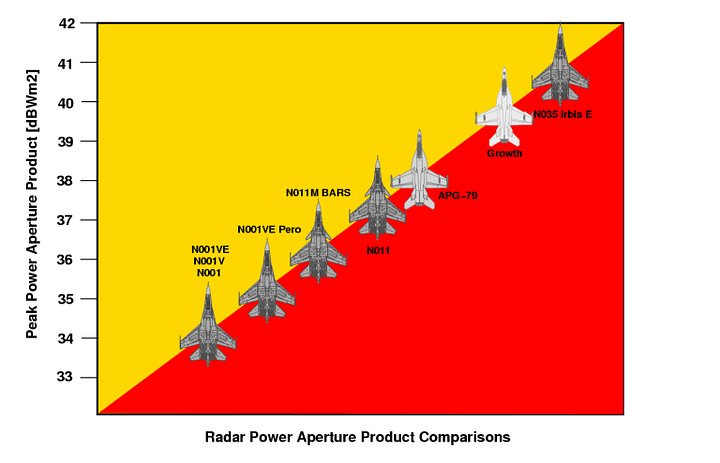
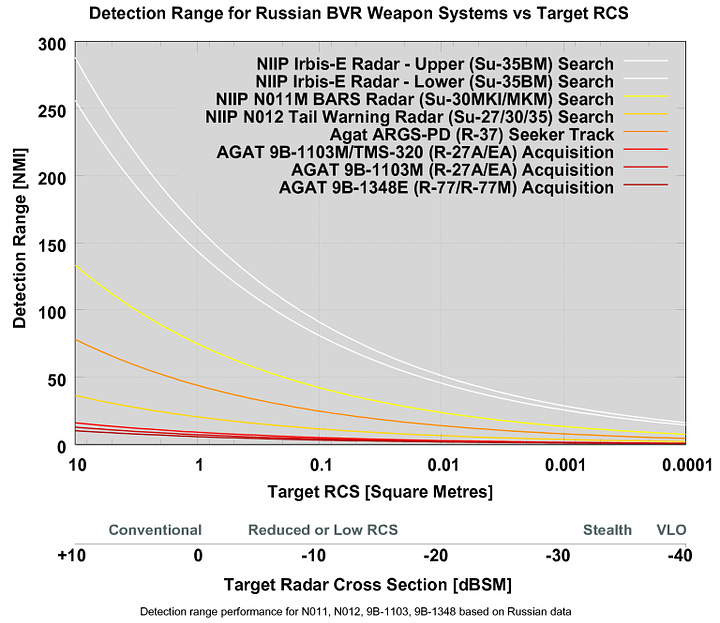
In short, the F-16 would be food for the Su-35 at any range, particularly max BVR.
31.
In Kerch Bridge Déjà Vu - Breakdown:
“The RF Armed Forces have taken control of the settlement of Novoselovka in the Lugansk People's Republic, our sources from the field report. This village already passed under the control of Russian units in November of this year, but then they were driven out.” - Is “November this year” an error or is it an old report? 🤔
Yes, I believe that’s a typo and is meant to say from November last year. In general, Novoselovsk (alternately spelled Novoselovka, Novosel’ivske, Novoselivske, etc.) was lost during the big ‘Kharkov Offensive’ which began last fall, but it finally fell in November, 2022. However, it represented pretty much the final line to which Russia withdrew, as they dug in right outside of it and never retreated any further than the area east of the town.
Also, it may be referring to the fact that Russian forces may have recaptured it briefly in November after first losing it in the same month, as it may have gone back and forth slightly at first. But then they lost it entirely and it wasn’t until just a few days ago they reportedly finally retook it, or most of it, as part of the major new advances happening in the Kharkov-Svatov-Kremennaya region.
With that said, I don’t know if they actually retook it fully because some maps still show it only as partly taken but I think the discrepancy can be explained by the fact that the AFU completely retreated from the town, leaving it in the gray zone, but Russian forces did not yet secure the entirety of it as it’s still under fire-control:
Situation on Luhansk front: Ukrainian Army withdrew from the town of Novoselivs'ke/Новоселівське, which is now located in the grey are with Russian Army trying to advance from the railway.
32.
Why do you think the RF allowed NATO planes into Ukraine to evacuate wounded after the Kharkov attack?
Do you think the RF will attack NATO/Polish forces if they attempt to cross the border?
I’m not aware of any NATO planes entering into Ukraine—I was under the impression they flew to Rzeszow and surrounding areas. This is the standard route that they’ve used many times before after attacks on mercenaries who require immediate medevac to German emergency trauma centers.
The planes typically land in Poland and Ukraine transports the wounded there, and from Poland they go elsewhere. I don’t think any planes land even in Kiev because of the danger of inherent in flying over Ukraine. Even when Biden visited Kiev a few months ago he took a 10 hour train ride from Poland into Kiev.
I see someone posted a link to Avia.Pro under your question, which claims that a Boeing plane crossed over from Rzeszow into Ukraine after turning off its transponder, under the supposed urgency of evacuating some very ‘high value’ individuals. If this is what you’re referring to, it must be said that Avia.Pro is a very disreputable and dubious site that mostly posts completely unattributed fakes, never giving any sources. It’s not a serious source of information, so if that’s where you’ve read it, I wouldn’t give much credence to the story. It’s interesting to read from time to time because there’s always something ‘sensational’ there but it’s often akin to Sorcha Faal level material. Like I said, the key indicator is the chronic lack of sources, which is always a bad sign when it comes to a news outlet.
As for attacking Polish forces, there were several other questions along this same line, so I’ll try to combine them all:
Thanks, Simplicius. What do you think will happen if Poland, egged on by NATO/ own delusions, will move the troops to Ukraine? What would Russia do? What would the US and UK do?
and:
Let me see if I understood Putin correctly: if Poland moves into West Ukraine (e.g. Lvov) then Russia will do nothing?
Doesn’t that go against what Medvedev said a few months ago (or was it last year) that if Poland moves even an inch into Ukraine territory without agreement from Russia that they would be considered enemy combatants?
I understand Russia having no interest in the West of Ukraine but allowing Poland to move in the middle of the conflict without an agreement of quid pro quo with Russia is a missed opportunity and might be problematic in the future as it gives them a safer/closer base of operations.
What about air strikes? Will that be considered on NATO territory? I don’t think so at first but saying that is Ukraine’s business and we won’t interfere doves in with the plan floated of letting West Ukraine into NATO - except this time by turning Ukrainian lands Polish.
See my other responses to this similar question above. In general, no Russia wouldn’t attack because the forces would have to give Russia a real reason to attack, such as threatening Russian assets in some way, or attacking them themselves. Russia wouldn’t start WW3 with its own first strike. However, as you saw in my other responses, Belarus has threatened Poland against annexing western Ukraine, though Lukashenko specifically said he would only “help out” the western Ukrainians if they ‘requested it’, which clearly implies that Belarus would not just strike first out of the blue either. But it clearly represents a national security threat to Belarus for Poland to occupy its southern border in that manner.
Most people forget how large Ukraine is. Western Ukraine is so far away from the frontline or the areas where Russia operates that you’d really need to give Russia a reason for them to strike. Poland simply entering would put them upwards of 1200-1500km away from Russian forces, which creates no logical casus belli for Russia to do anything.
But ultimately, it will depend on what the situational context of such an entry for Poland would be. Under this hypothetical scenario, Poland wouldn’t just enter for “no reason” either. Presumably, there would already be some kind of unforeseen heightened event or black swan incident which would compel such a move. So taking that into account, this can change the calculus somewhat. Because if there’s already some type of escalated ‘incident’, like a falseflag of some sort having gone off, or some other type of confrontation between Russia and NATO, then Poland entering Ukraine would likely have a completely different character than a simple Sunday stroll.
But at the end of the day, let’s be real. No great/superpower is going to attack another great/superpower or superpower affiliated bloc member. U.S. wouldn’t dare do it either, just look at the Pristina Airport incident in the Yugoslavian conflict in 1999. A unit of Russian troops took over the airport under NATO’s nose by entering the country under NATO’s ostensible ‘control’ without any authority and the U.S./NATO froze and didn’t dare do anything. In fact, Wesley Clarke was fired as supreme commander for his inability to respond to the humiliation.
So the fact is, without an extremely overt and justifiable reason, no one is going to be shooting the other side. When I made my prediction long ago that the U.S. 101st / 82nd would possibly be sent to occupy Odessa eventually, they would likewise be under strict orders to not engage Russian forces in any way whatsoever, banking on the hope that Russians would not engage them either without being fired on first. That’s simply how it works; it’s all about occupying a piece of land and squatting on it with the knowledge that the other side won’t initiate the attack for fear of WW3 breaking out. Just look at what happened with Syria. The U.S. was able to come into Deir Ezzor province and squat on it because they knew Russian forces are not just going to attack them unless attacked first.
As for what Medvedev may have threatened, one has to ignore such idle banter from these Zhirinovsky-esque figures. Not only is he not president, Medvedev is not even the prime minister anymore, he’s now relegated to a lowly security council chairman post. Shoigu reportedly also stated in the past that any Ukrainian missile strike on Crimea would be a red line that would incur immediate devastating consequences, and days ago Ukraine allegedly struck Crimea numerous times with these ‘Western weapons’. With that said, on that account, tonight Russia reportedly struck some possible high value targets or ‘decision centers’ as there were large new strikes including with hypersonic Kinzhals, which are typically only used against ‘decision centers’ so as not to give them time to bunker up or escape.
So we’ll see, maybe they’ll keep their word. But in general, such threats are usually idle banter and should be ignored. U.S. also threatened many reprisals and did nothing when Russia humiliated them repeatedly, like knocking down their Reaper drone near Crimea. It’s just par for the course in politics.
But as far as the last question regarding ‘quid pro quo’ for Poland moving in, that’s certainly a possibility. There are very few actions taken in this game that aren’t undersigned by secret backdoor deals and handshakes. That’s how everything has functioned thus far because it’s simple realpolitik. Just look at the grain deal and the various Russian pipelines that continue to run unabated through Ukraine to Europe, as well as the railways which many believe are kept intact by Putin because there are certain understandings in place with the West, i.e. Russia allows certain concessions in exchange for others, of which I’ve written about before.
As for airstrikes and NATO territory, the infamous Article 5 doesn’t actually say NATO ‘territory’ has to be attacked to invoke Article 5. A NATO member can simply be ‘attacked’ no matter where they are, the territory doesn’t matter. Erdogan once threatened to invoke Article 5 when his drone was shot down in international waters dozens of kilometers from Turkey. So technically, if they wanted to, they can invoke Article 5 by being attacked in Ukrainian land particularly if they annexed that land first and legally consider it their own. But it’s also all about perception, recall that Article 5 does not obligate anyone to automatically support them, it merely asks members to respond in whatever way they ‘deem necessary’ in support of their ally. Thus, if someone invokes Article 5 over a clearly dubious scenario, like being attacked on someone else’s soil they shouldn’t have been on anyway, then it could result in getting no support from members. Thus, it’s best strategically to only invoke Article 5 when you really have the clear moral justification so you don’t end up looking like a fool with no one willing to back you militarily.
Anyway, my last thoughts on it are that, barring any big black swan type of event or falseflag, the only real way I foresee Poland entering Ukraine would be a slow, subversive trickle, anyway. Meaning, it would start under some sort of administrative guise, like a brigade of troops coming in unarmed and seemingly non-threatening under the appearance of training Ukrainian forces in the west of the country, but then slowly converting the administrations in that region to Polish ones. There’s some evidence this has already been happening to some extent.
This is the method I’ve spoken about, which is most often used; the same method Turkey used to subvert all of north Syria and Idlib region in particular under the guise of various misdirections like ‘humanitarian effort’, etc., when in reality they were gradually converting the entire area into a Turkish one, by replacing the police, connecting municipal/utility services to Turkish ones, changing the school procedures/books/materials/teachers, etc., replacing key figures with very pro-Turkish ones, etc.
That’s to say, I don’t see a sudden lightning invasion of massive Polish columns to seize western Ukraine. This would only happen if there were some kind of extenuating circumstances in the form of a big ‘event’ to, at least ostensibly, justify such an action. And such an event could still happen, like a ZNPP falseflag or something along those lines.
But barring that, I don’t see a coup de main style takeover but rather some kind of slow, subversive and administrative one, something where lines are blurred—which is a technique, by the way, that NATO has mastered in places like Kosovo, etc. Though Russia isn’t far behind in the technique, they also successfully used such a soft veiling tactic in the infamous ‘Little Green Men’ takeover of Crimea in 2014. This is more along the lines of what I’d foresee Poland attempting to do.
33.
To keep it simple, I'll just follow up with my earlier question as it does seem the Stavka agrees that capturing Kharkov province is the best and clearest path to a knock-out blow to force Ukraine's capitulation. While I suspect they are in no particular rush, it does seem as if the Russians are moving forward strategically in anticipation of a major offensive in this area in 2024? Your thoughts?
Yes, I’ve written about for a long time now that the Kharkov region will be the key for the entire war not because it itself is important, but rather that it creates the required flanking positions to take out the key Ukrainian command/administrative/military center of all of Donbass, which is the Slavyansk-Kramatorsk agglomerate.
Last year, when Russia was actually getting close to besieging Slavyansk, they did it by slowly enveloping it from both northwest (via Izyum) and northeast (via Lyman). This is the same tactic used to capture the large Severodonetsk-Lisichansk agglomerate earlier, by enveloping it from Rubizhnoe in the north/northwest, then the northeast and south, until the AFU had no choice but to withdraw or risk total entrapment.
I always said that I don’t think you can take Slavyansk-Kramatorsk just by approaching it from the east and ramming your head against a huge unified north-south defensive line at the perimeter of the agglomerate. But the only way to approach it from the north/northwest, is to first retake the Kharkov region.
The other big consideration is that Putin has made it a priority to stop the saboteur actions on Russia’s borders (Belgorod and Kursk regions, etc.) by pushing back the line from there, so this is another urgent priority to protect Russian citizens across the border.
The only question will be, will they choose to just continue plodding west toward the Oskil and then attempt to cross the Oskil (which would be very difficult) to move through Kharkov region that way? Or will they insert another force from the north of Kharkov city itself and begin working their way down. The answer will lie in how many free forces they have, as you’d need to insert a pretty huge amount of men to open up a whole new front like that, likely at least 100k.
I’ve seen reports that Russia has not yet committed its main reserves in the Kharkov-Svatov-Kremennaya region, and we know from the AFU’s own reports that Russia has its largest force concentration there of any theater—reportedly 180,000 men, and some of Russia’s most elite, to boot. Not only the various VDV units but Russia’s most elite tank units, the 1st Guards Tank Army is there. So clearly Russia has something big planned there by committing that many forces to a relatively ‘dead’ region far away from what most would consider the significant hot spots of Bakhmut and Zaporozhye. This indicates to me that there are major plans for this area.
They could perhaps try to reach the Oskil by end of 2023 as a goal, then focus on the Kharkov region itself for 2024, perhaps even using winter to reroute forces toward the northern vector to open up that second front to draw AFU reserves away from the Oskil to make it easier for Russian troops there to cross it.
Ultimately, the big X factor that everything revolves around is how many total men does Russia have, and whether they plan to get more. If Ukrainian estimates of 360k total Russian forces are right, which are in line with my own, then it’s really not enough men to open up any new fronts or do anything fancy other than simply continuing to slowly grind away and inching forward. But if there’s any truth to rumors that Russia may conduct a large second mobilization in the future, then this would obviously open up entirely new options, and the mobilization, to me at least, is looking more and more likely for a variety of reasons I’m going to cover in depth in the next upcoming report.
In conclusion, the best way to summarize it is: this northern Kharkov sector is the only sector in the entire conflict where Russia is unequivocally on a full offensive. Every other sector they are currently playing defense, though it may be ‘active defense’ in most places where they actively counter-act and retake positions. But in Kharkov, it’s full-fledged offensive and the AFU is on a major retreat. I believe this will continue, as—despite how well they’re doing defensively in the south—I don’t expect Russian forces there to go on the offensive any time soon. Part of this is simply because I know the type of unit compositions in many of those places, and they are not strong assault types. So the Kharkov region will likely remain as the one with the strongest offensive focus for the time being, and 2024 will all depend on how much more men Russia will be able to free up, i.e. either by a new mobilization, or the mass adoption of men from the ongoing ‘stealth mobilization’ that has been netting 40k men per month, though for now have been absorbed for Shoigu’s newly developing reserve armies.
That’s a wrap on Part 2. Tune in for the final Part 3 in a few days.
And if you enjoyed the read, I would greatly appreciate if you subscribed to a monthly/yearly pledge to support my work, so that I may continue providing you with detailed, incisive reports like this one.
Alternatively, you can tip here: Tip Jar





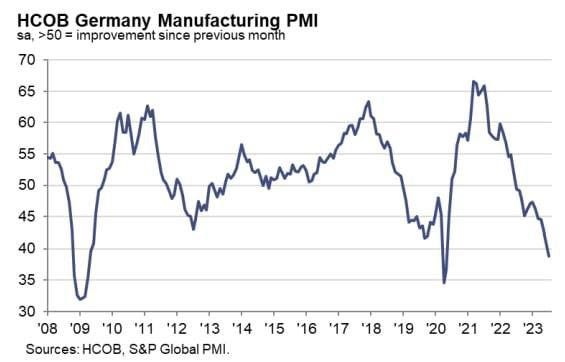
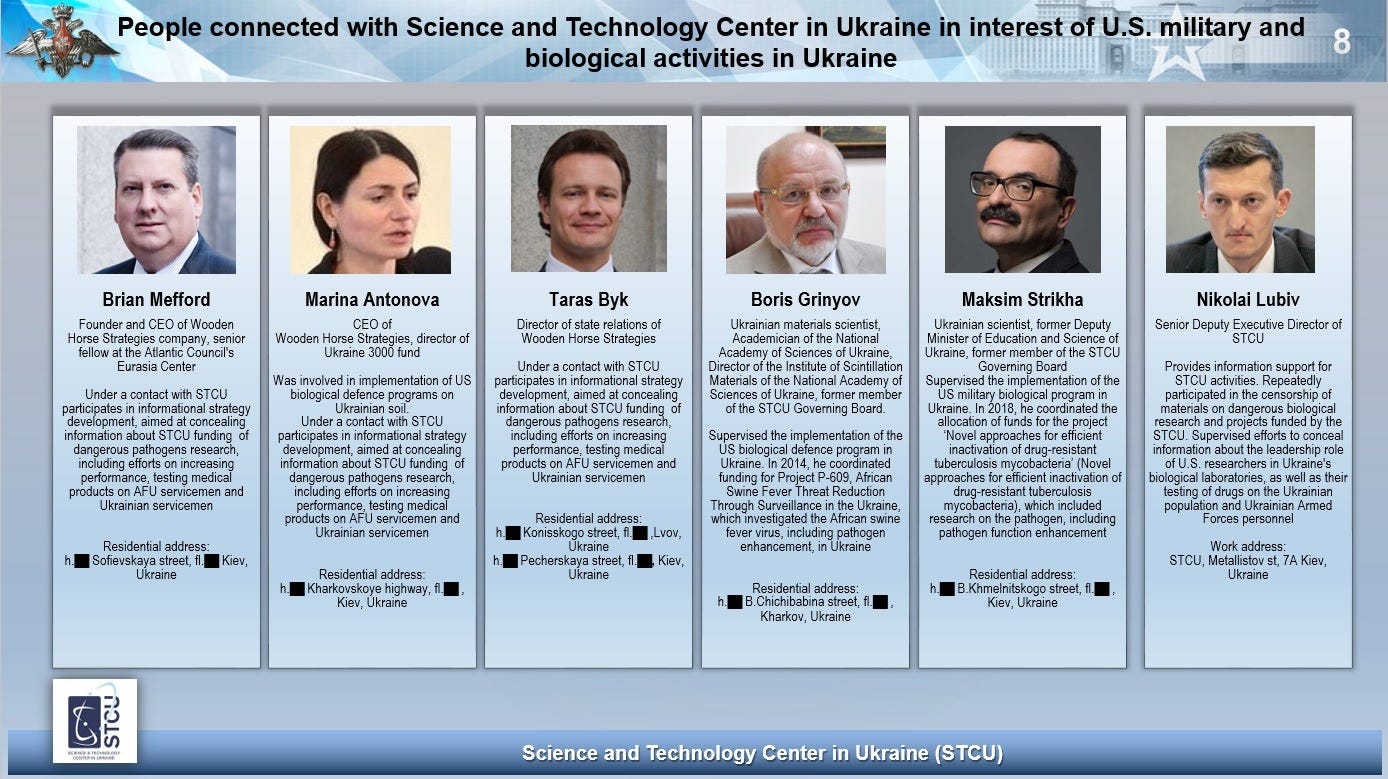
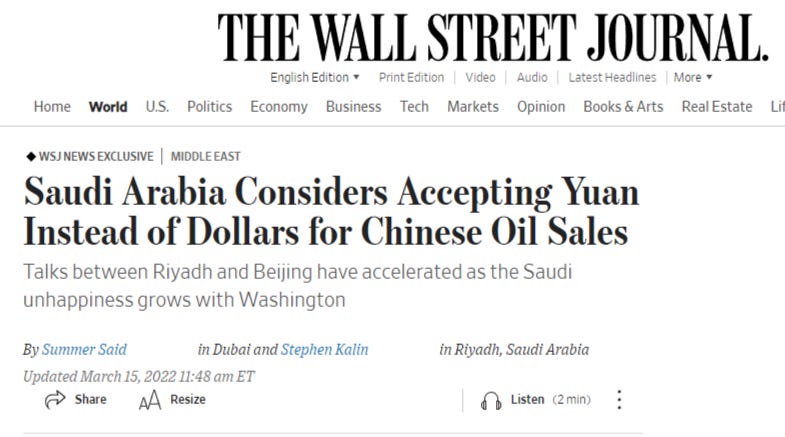



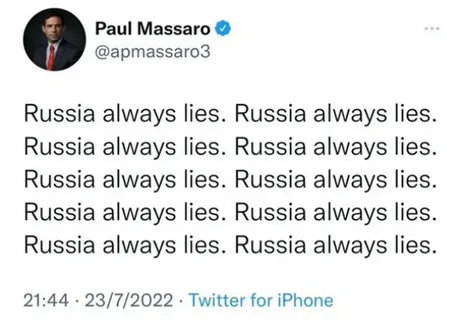


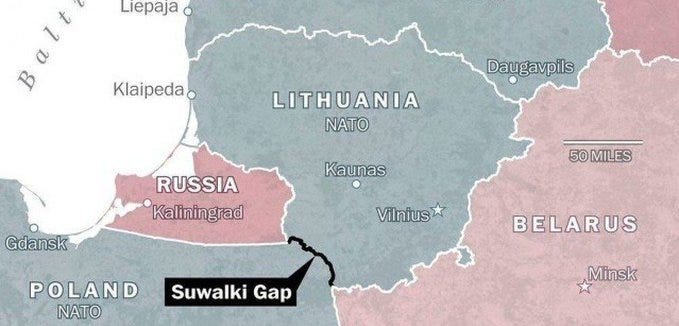
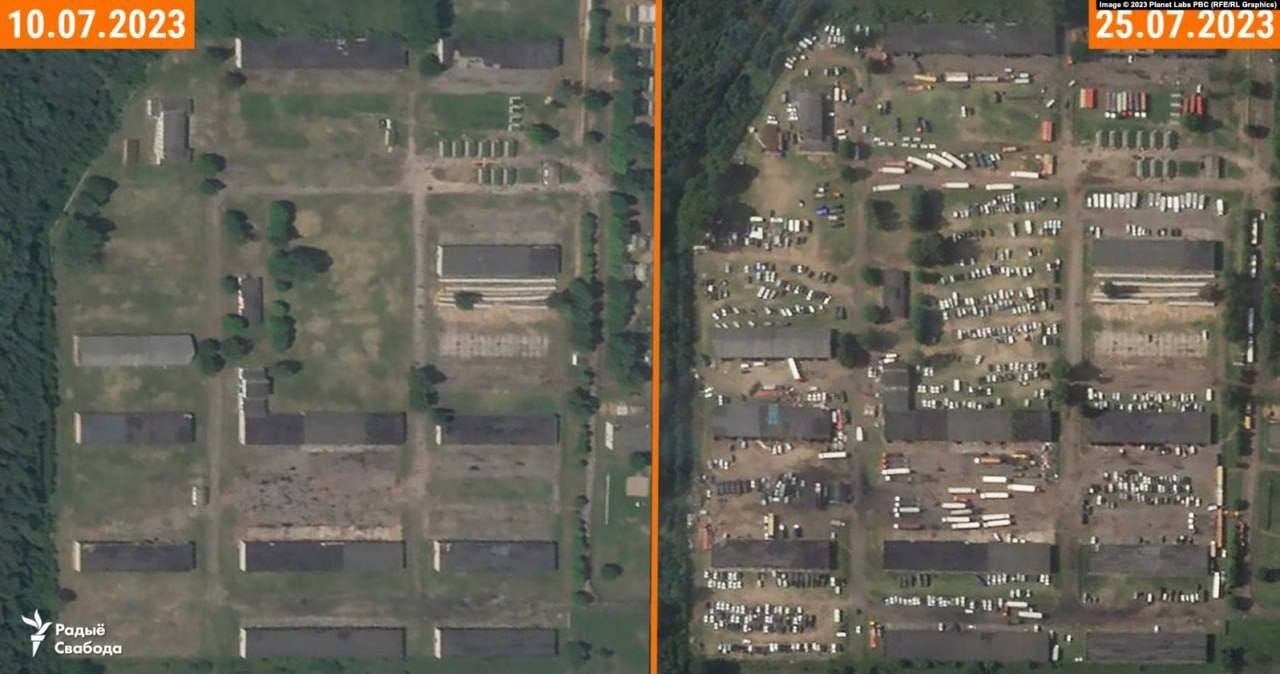
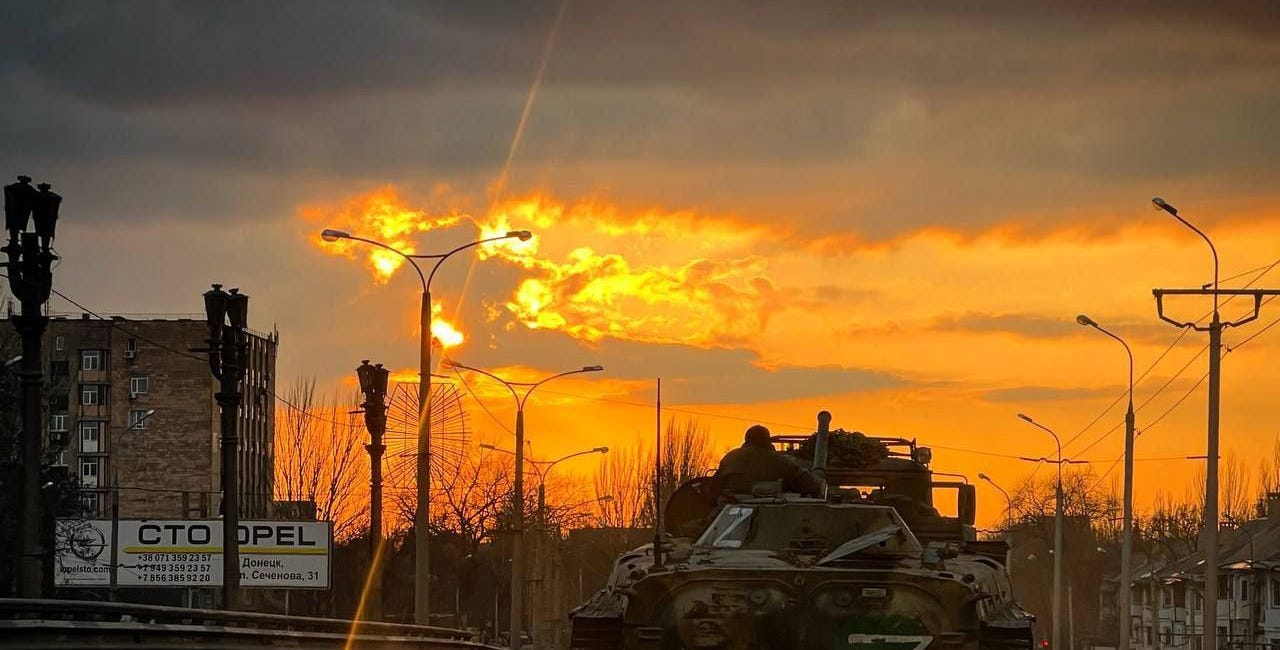
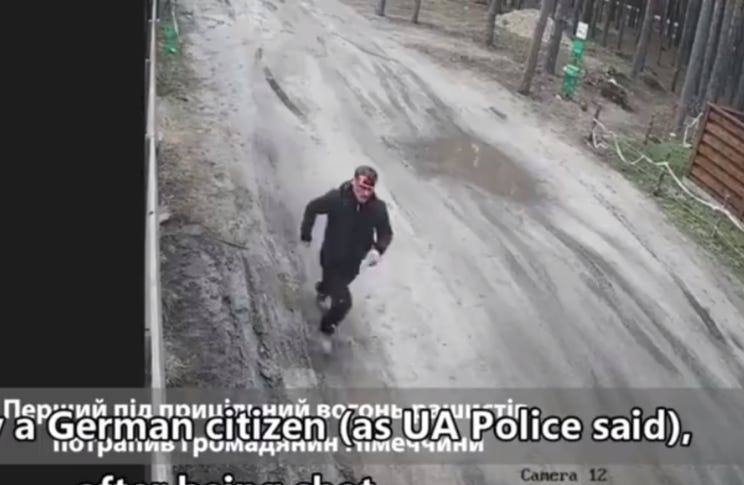



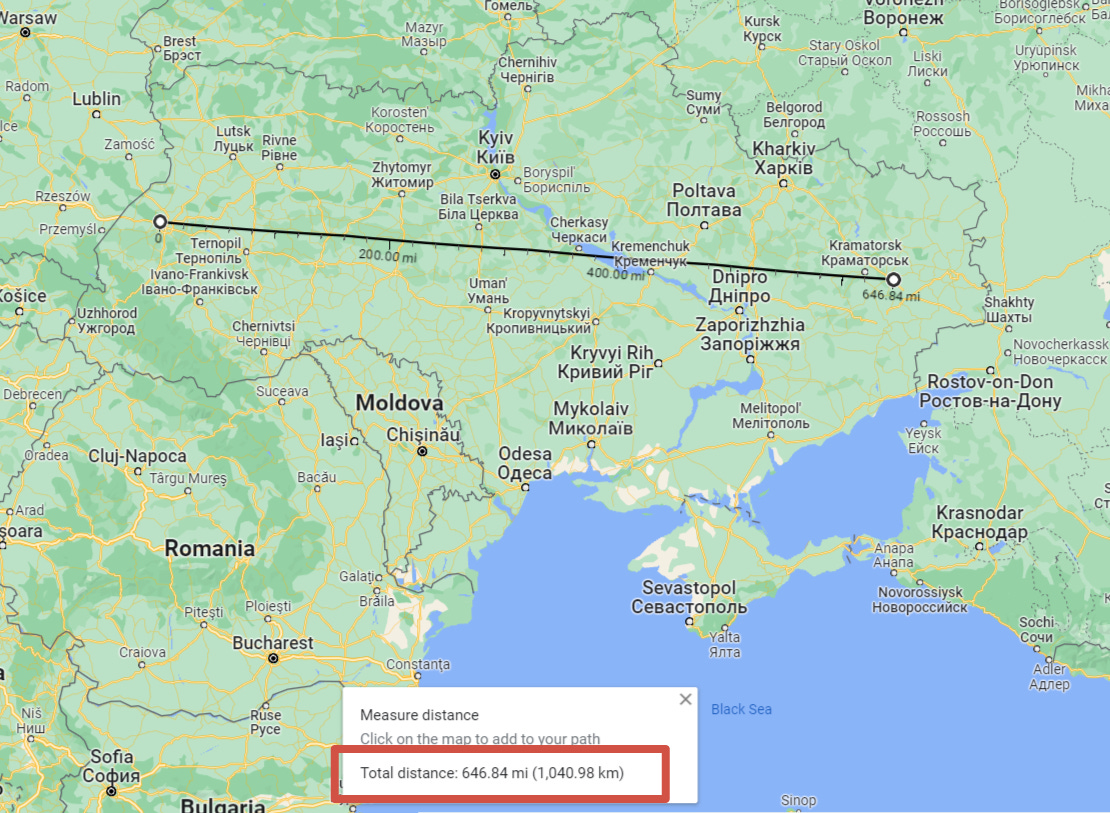
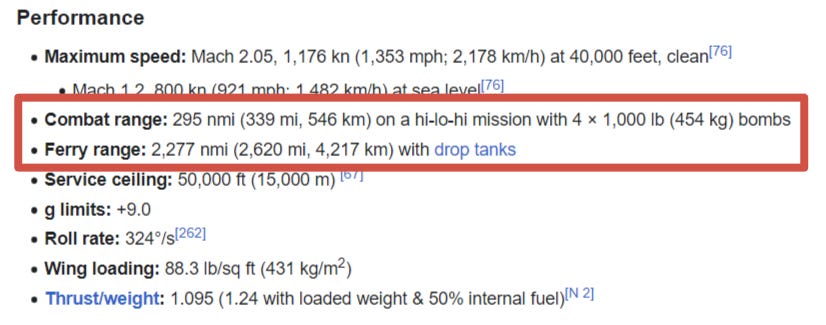
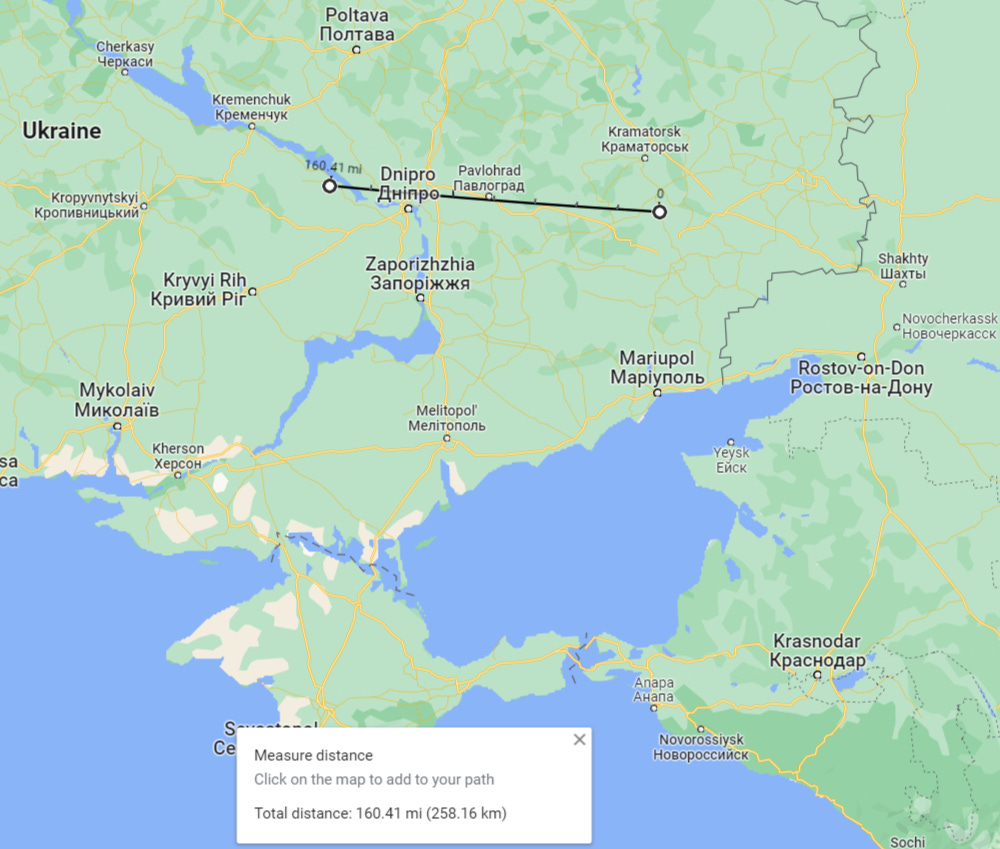

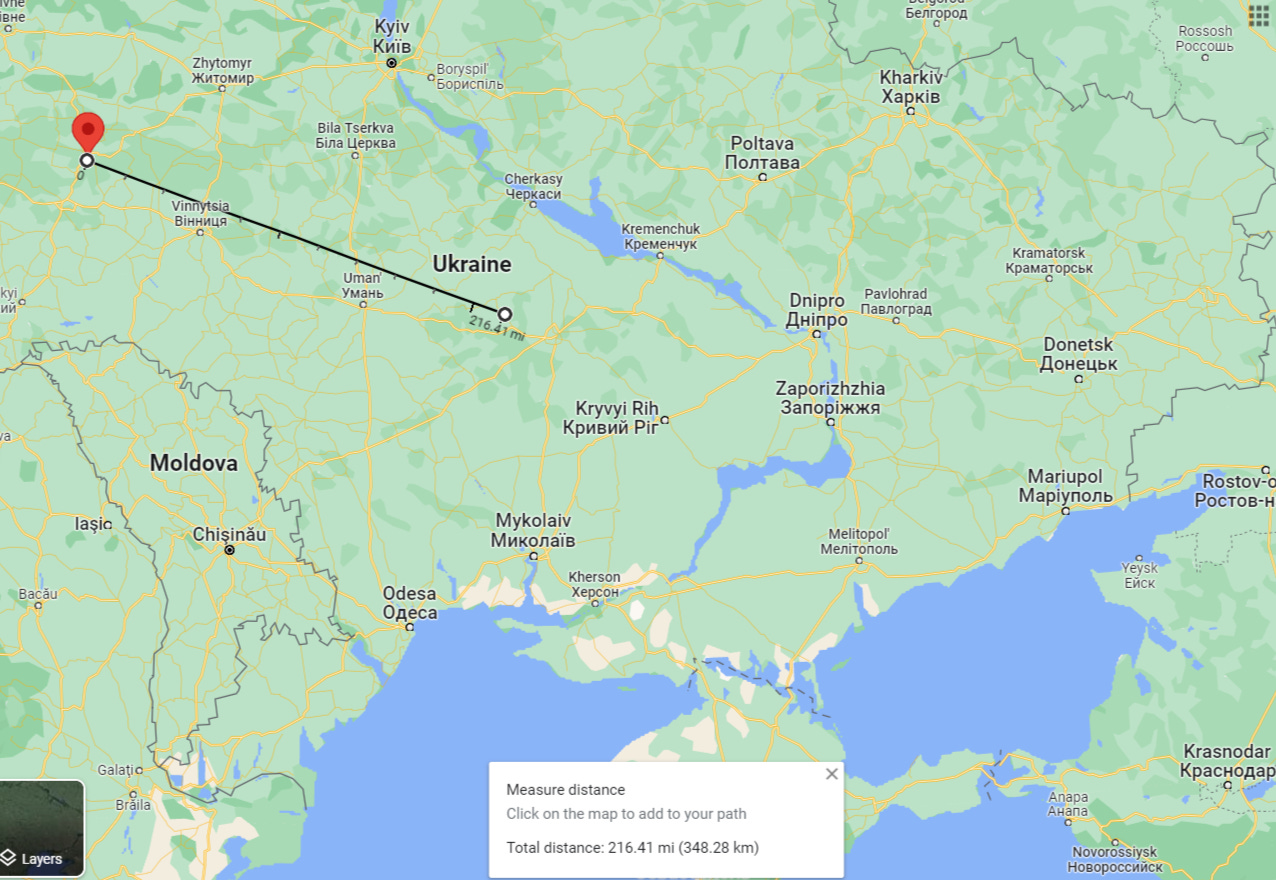
![Paid Subscriber Weekly Mailbag Answers - 5/22/23 - [Part 2]](https://substackcdn.com/image/fetch/w_1300,h_650,c_fill,f_auto,q_auto:good,fl_progressive:steep,g_auto/https%3A%2F%2Fsubstack-post-media.s3.amazonaws.com%2Fpublic%2Fimages%2F732a5d13-fb23-4369-9dfe-29d8a923a9af_255x255.png)
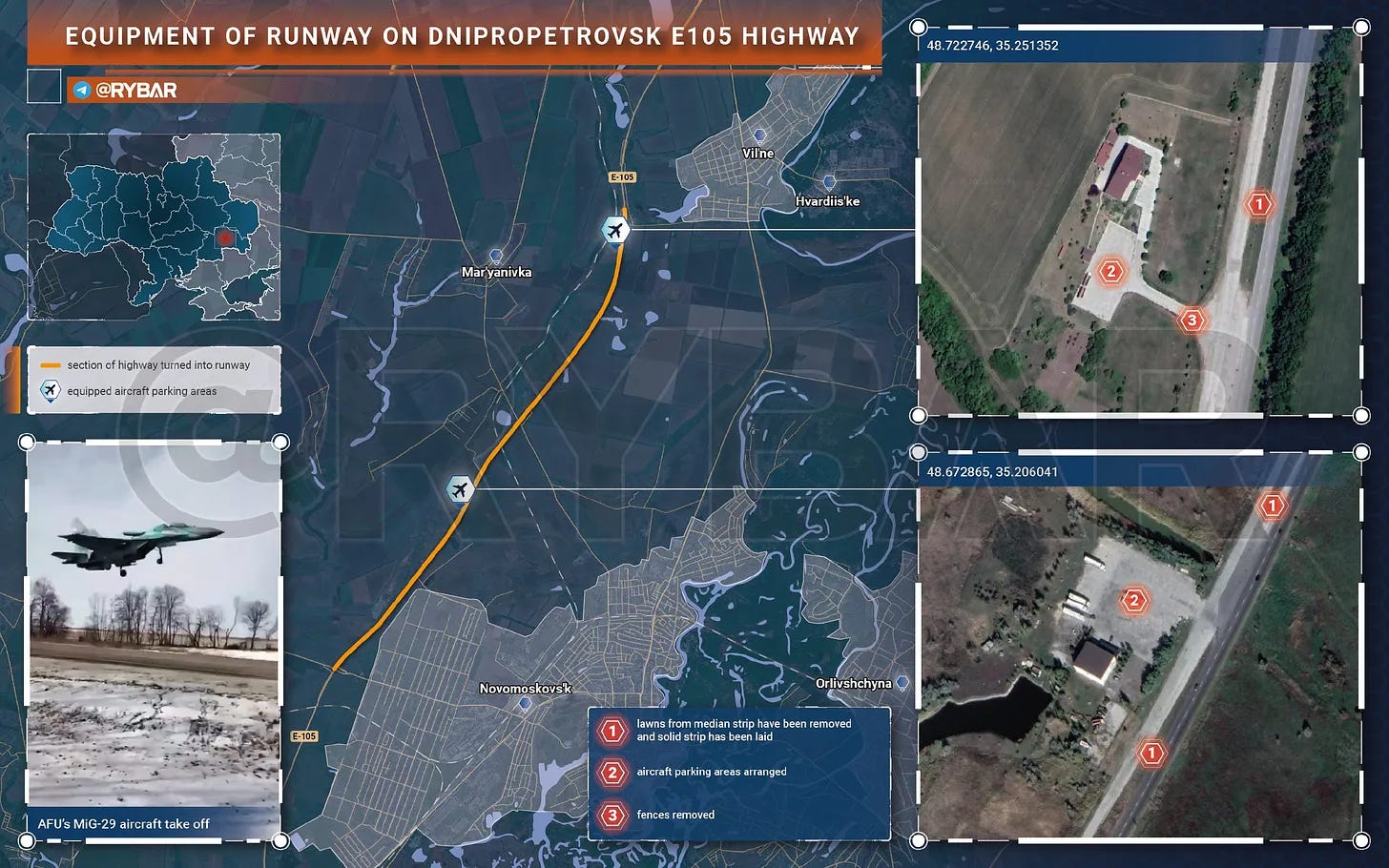
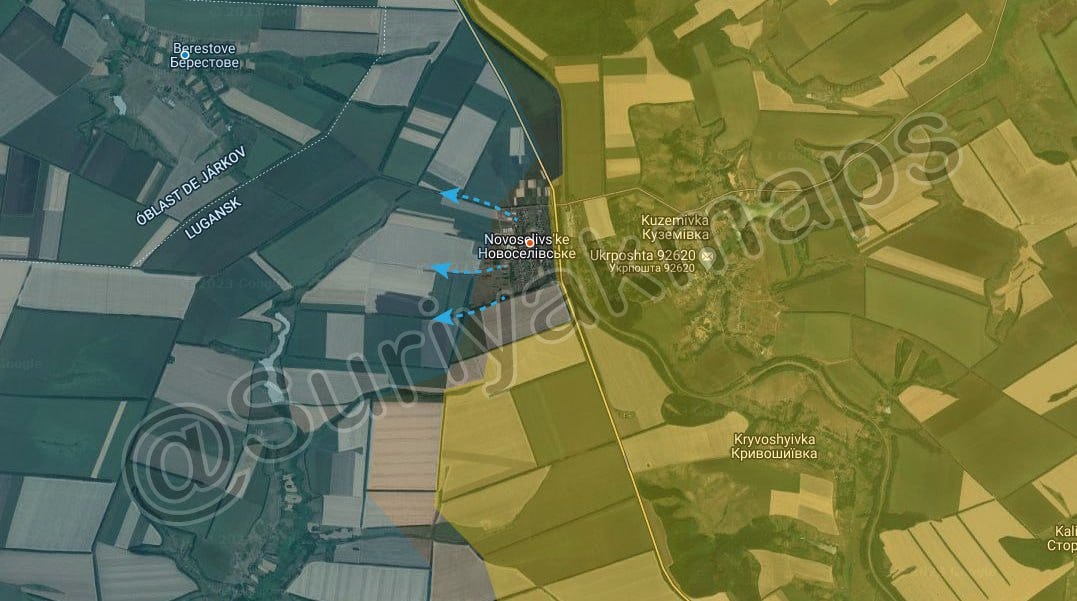
Hi thank you so much for taking the time to answer my question.
There is one point I forgot to mention in my question.
Europe and the USA’s economies are stagnating, debt levels too high and politically a complete mess.
But there is an incentive for the USA to push Europe into war with Russia.
It gets rid of an economic competitor but most importantly, with another world war on European ground, capital flows from Europe to the USA will accelerate. USA economy then expands.
One could argue that without world war 1 and 2 (where the same happened) the USA would not be a superpower.
Before world war 1, the USA was almost bankrupt.
"The stock market is fairly meaningless when it comes to the real economy of the plebs as it’s removed from any connection to the average citizen. Only a small percentage of American citizens, for instance, hold stocks, and that’s by way of things like IRA and retirement portfolios at their jobs—i.e. things which are not actively paying out dividends that they can use on a daily basis, but rather are more akin to investments for their retirement."
I'd have to disagree with this statement. While true, it doesn't capture the totality of the situation which is far more complex than most people realize. For starters, many pension and insurance funds are directly invested in stocks, or are holding bonds purchased during a low interest rate environment which is no longer the case. Those bonds, on the books at face value, are in no way worth their stated value, and are worth even less in a liquidation panic scenario. Same goes for stock holdings. In my time as an investor I've seen three such events and yet another could be in the offing. Given the leverage in the system, which is off the charts, any such dislocation would have a direct impact on the banking system and indirectly on publicly traded companies inasmuch as their bond holdings would be under threat as well as their stock prices, due to inability to refinance at favourable rates, or in the extreme, at all. I could go on, but you'll get a better sense of the situation by reading Doug Noland's credit bubble bulletin than anything I could come up with:
https://creditbubblebulletin.blogspot.com/
"A tiny almost negligible percentage of people actually actively make some kind of money from ‘stocks’. As such, it remains a sort of self-enclosed system whose ups and downs are disconnected from real society."
I'm one of those people, being a stock and options trader from 1989 to 2008 when (ironically) I took Jim Cramer's advice to traders: "if you're up big, take some off." Well, it ALL came off and I haven't looked back. I wouldn't go near the markets today as they are far more volatile and subject to far more severe dislocations than in previous years. The point is, I'm not alone. Many of us bailed and never returned. This has had a major impact on that sector of the market which few understand and even fewer are willing to take risks in. I'm referring to mining and oil exploration. Without significant investment in that high risk environment the cost and availability of primary inputs produces a significant drag on downstream activity where most people are directly or indirectly employed. Under those circumstances you can only keep the financial game going as long as cheap credit is available and we can push the day of reckoning into the future. Well that future has arrived and shortages of primary inputs are now appearing, and at the worst possible time, when financing is expensive and "investors" much like Elvis, have left the building.
I agree, the day to day movement of the S&P500 or DJIA is relatively meaningless to the average person, but inflation, unemployment and the attendant social disarray are very meaningful to people who live from pay check to pay check, which is pretty much everyone these days.
Just as one example:
https://www.cnn.com/2023/07/27/business/yellow-corp-bankruptcy/index.html
I'm a child of the 60's and entered the workforce in the 70's during the 'stagflation period" that Paul Volcker allegedly ended by driving interest rates to 16% resulting in mortgage rates approaching 21%. Can you even imagine the impact something like that would have today? Jobs were very hard to find back then. I went to sea working on oil tankers because it was the only way to make any real money. Likewise a close friend went to work in the Arctic, and another moved to Germany to find work as absolutely nothing was locally available.
Sorry to be so long-winded but my major point is that all these things - stocks, bonds, and the economic activity they represent are directly or indirectly connected, and it's just impossible to separate them. It's the Butterfly Effect write large, and I suspect we'll see that play out in the not to distant future. https://en.wikipedia.org/wiki/Butterfly_effect